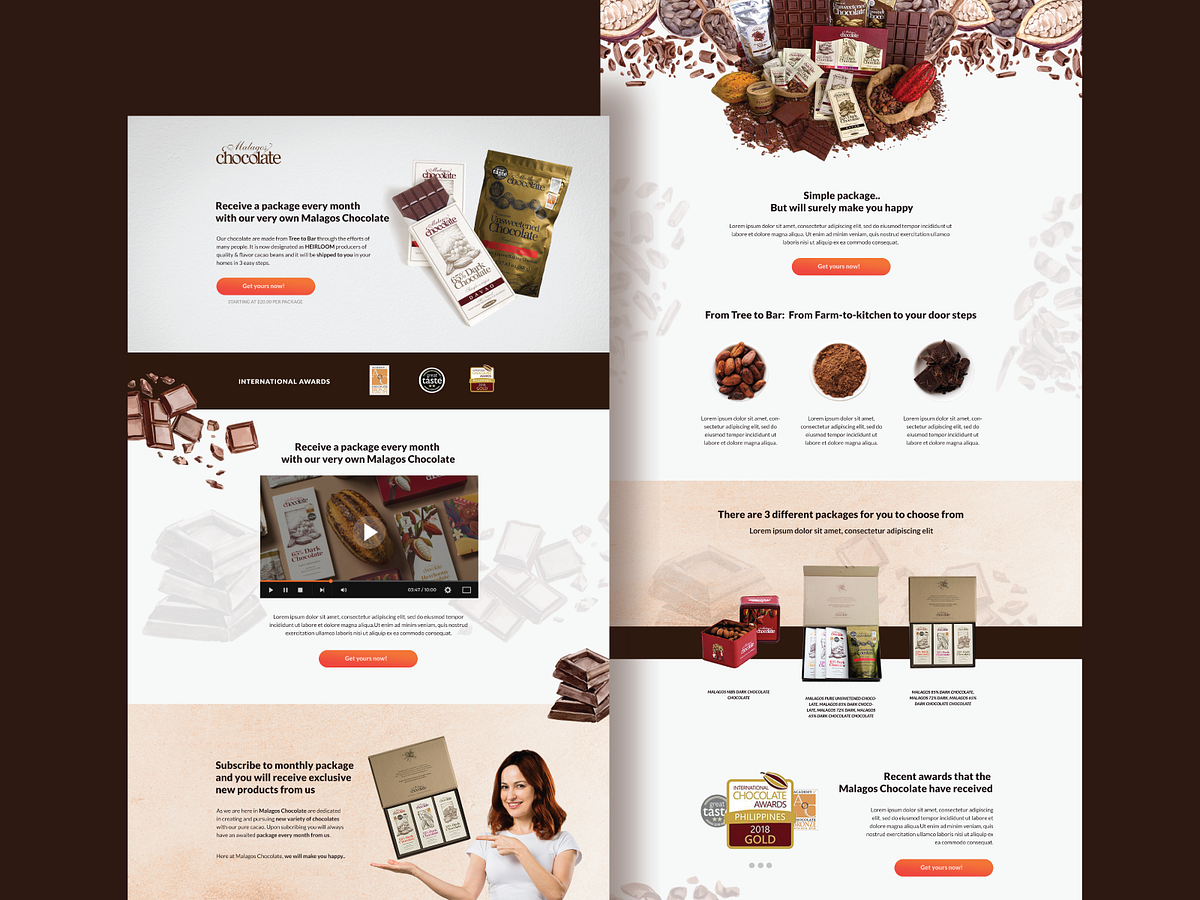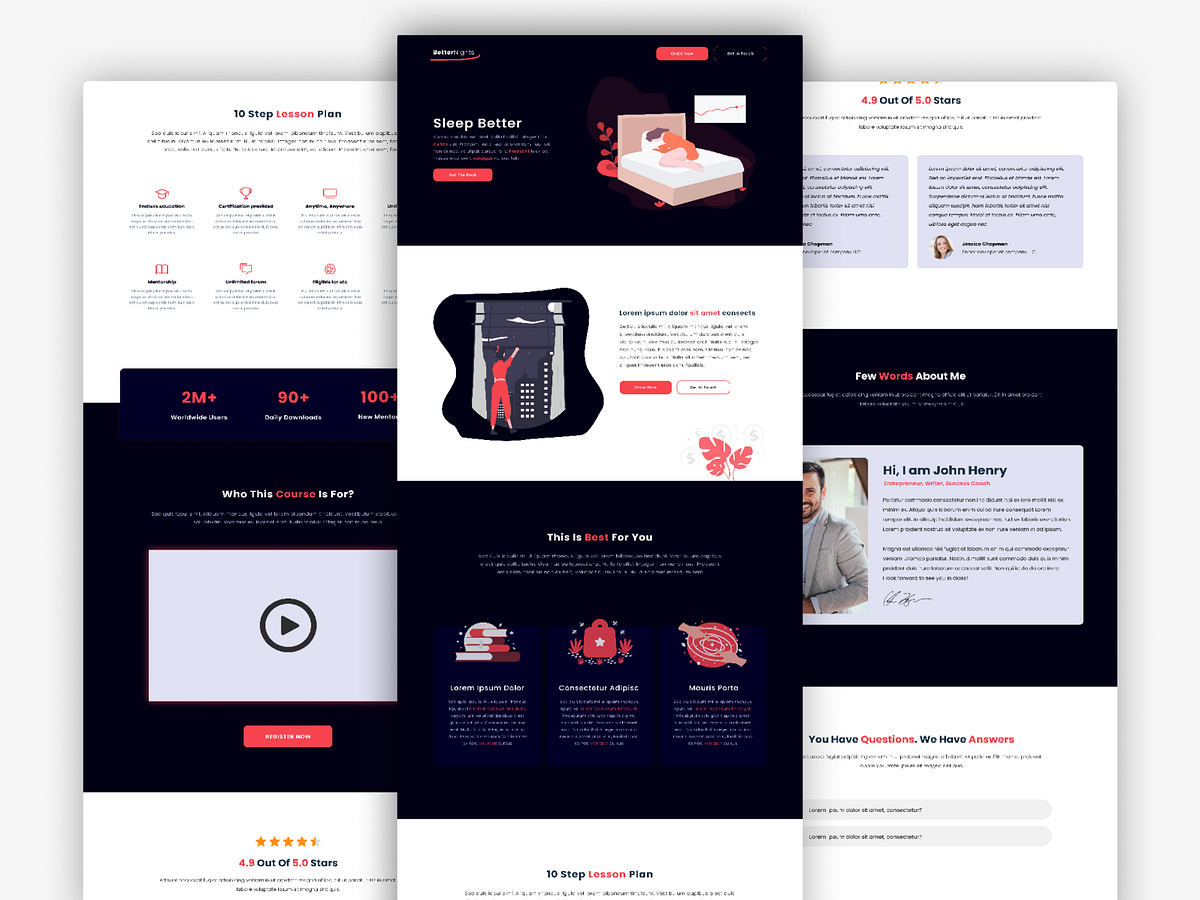Welcome to the ultimate guide where we delve into the intricate world of crafting high-converting funnels and landing pages. In this comprehensive piece, we'll explore the pivotal role that these elements play in enhancing user engagement, driving sales, and boosting your website's performance.
1. Why Optimize Conversion Funnels?
Conversion funnels are the backbone of any successful online business. They serve as a roadmap guiding your potential customers from the initial interaction to the ultimate conversion. By optimizing these funnels, you ensure that your lead generation strategies align perfectly with your customers' needs, thus maximizing sales potential.
An effective lead generation funnel not only attracts visitors but also engages and retains them throughout their journey. Incorporating target keywords strategically within these funnels can significantly impact the attraction and retention of potential customers.
2. Essential Components of Landing Pages
Landing pages act as the gateway to conversions. These pages are meticulously designed to prompt visitors to take specific actions, be it signing up for a newsletter, making a purchase, or requesting more information. Optimizing these pages involves the strategic placement of CTAs and leveraging design elements that captivate the audience's attention.
The Impact of CTAs and Design Elements
CTAs serve as the guiding force that directs users toward conversion. Utilizing synonyms to diversify the language and value propositions within CTAs can enhance their effectiveness. A/B testing different CTAs with LSI keywords can provide insights into which ones resonate best with your audience.
Chapter 1: Target Keywords for Conversion Optimization
1.1 Leveraging Lead Generation Funnels
The foundation of a successful conversion funnel lies in understanding and integrating long-tail keywords that resonate with your target audience. These keywords act as the bridge between your potential customers and your offerings, optimizing the path toward conversions.
Incorporating Target Keywords for Effective Lead Magnets
Crafting compelling lead magnets involves a meticulous selection of target keywords that align with your audience's interests and pain points. Creating content that directly addresses these keywords ensures that your lead magnets are not only attractive but also highly relevant.
Analyzing Conversion Rates with Targeted Keywords
Monitoring and analyzing the performance of your conversion funnels using target keywords provide valuable insights into which segments of your audience are responding positively. This analysis allows for fine-tuning and optimizing your funnels for better conversion rates.
1.2 Conversion Rate Optimization Strategies
Implementing target keywords into your A/B testing strategies can yield significant improvements in conversion rates. Testing variations of landing pages with different keyword focuses allows you to identify the most effective combinations.
Enhancing Sales Funnel Development with Keywords
Keywords play a vital role in shaping the structure and content flow of your sales funnels. By integrating target keywords at various stages, from awareness to the final conversion, you create a seamless journey for potential customers.
Chapter 2: Integrating LSI Keywords for Enhanced UX
2.1 User-Centric Design with LSI Keywords
In today's digital landscape, user experience (UX) is paramount. Integrating LSI keywords seamlessly into your design elements enhances not only the content's relevance but also the overall user experience. By understanding the user intent behind these keywords, you can create a more user-centric design that resonates with your audience.

Impact of LSI Keywords on UX in Landing Page Development
When LSI keywords are strategically embedded within the content of landing pages, they contribute to a more cohesive and comprehensive user experience. This integration ensures that the content is not only keyword-rich but also informative and valuable to the visitor.
Mapping Customer Journey Using LSI-Enriched Content
LSI keywords enable a deeper understanding of the user's journey through your website. By mapping the customer journey based on these keywords, you gain insights into user behavior, preferences, and pain points, allowing for a more personalized and effective approach.
2.2 Maximizing CTAs with LSI Integration
Call-to-actions (CTAs) are pivotal in prompting users to take the desired action. Integrating LSI keywords into your CTAs ensures that they align seamlessly with the surrounding content, enhancing their relevance and effectiveness.
A/B Testing CTAs with LSI Keywords for Improved Click-Through Rates
Testing different CTAs enriched with LSI keywords provides valuable data on which language resonates best with your audience. This data-driven approach helps in optimizing CTAs for improved click-through rates and conversions.
Mobile Responsiveness and LSI Keyword Placement
The mobile experience is a critical factor in today's digital landscape. Ensuring that LSI keywords are well-integrated into mobile-responsive designs further enhances user experience, contributing to higher conversion rates.
Chapter 3: Diversification through Synonym Terms
3.1 Synonyms in Crafting Conversion-Optimized Pages
The use of synonym terms offers a unique opportunity to diversify the language and messaging within your content while maintaining the essence of your offerings. Optimizing value propositions and key messaging using synonymous terms ensures that your content resonates with a broader audience.
Optimizing Value Propositions Using Synonym Terms
Utilizing synonyms strategically within value propositions allows you to cater to different segments of your audience. This diversification broadens the appeal of your offerings, increasing the likelihood of capturing varied user interests.
Multivariate Testing and Synonymous Term Integration
Implementing multivariate testing strategies that incorporate synonymous terms allows for a deeper understanding of how different language variations impact user engagement. This empirical approach aids in fine-tuning content for maximum effectiveness.
3.2 Expanding Customer Acquisition with Synonyms
The use of synonyms extends beyond content creation; it plays a pivotal role in enhancing customer acquisition strategies. By diversifying language and messaging within lead generation funnels, you create more engaging pathways for potential customers.
Exploring Synonym Terms for Enhanced Lead Generation Funnels
Synonymous terms offer flexibility in crafting compelling lead generation funnels. By exploring different language variations, you can tailor your approach to appeal to diverse audience segments.
Implementing Synonyms in Exit Intent Strategies
Exit intent strategies, such as pop-ups or offers, benefit from the use of synonymous terms. This approach ensures that even when visitors are about to leave, the messaging they encounter aligns with their preferences, potentially retaining them or prompting action.
Conclusion: Integrating Strategies for Maximum Conversions
Crafting high-converting funnels and landing pages involves a meticulous integration of various strategies. From leveraging target keywords to integrating LSI keywords and synonym terms, each aspect plays a vital role in optimizing the user experience and driving conversions.
Recap of Keyword Integration for Funnels and Landing Pages
Throughout this comprehensive guide, we've explored the significance of target keywords in shaping lead generation funnels and conversion rate optimization. Additionally, the integration of LSI keywords has been highlighted, showcasing their impact on user-centric design and CTAs. Moreover, the use of synonymous terms has been emphasized, illustrating their role in diversifying content for better search visibility.
Importance of Holistic Approach in Conversion-Driven Web Design
To achieve maximum conversions, a holistic approach that combines keyword optimization, user-centric design, and diversified content strategies is essential. By understanding your audience and aligning your strategies with their preferences, you pave the way for enhanced user engagement and increased conversions.

